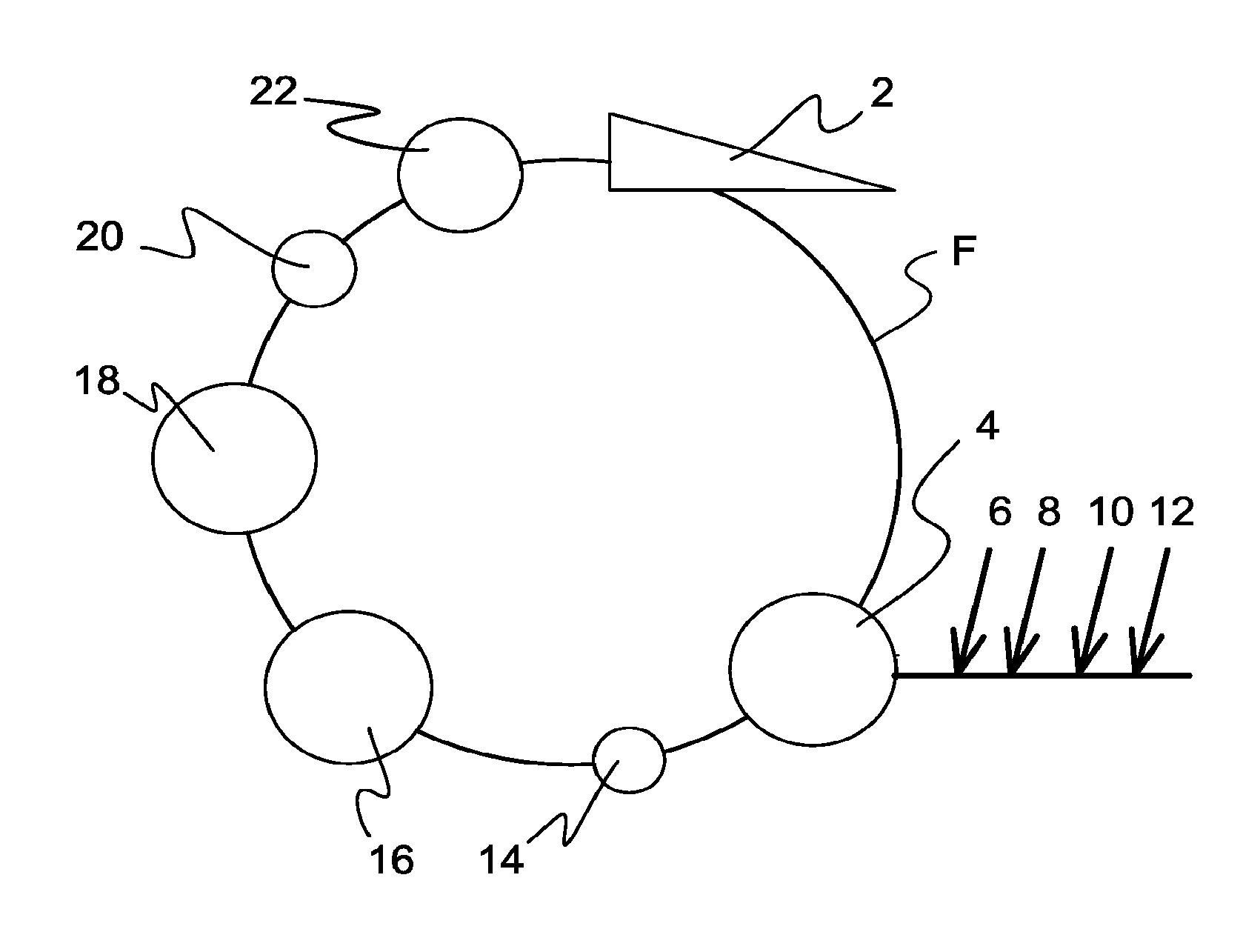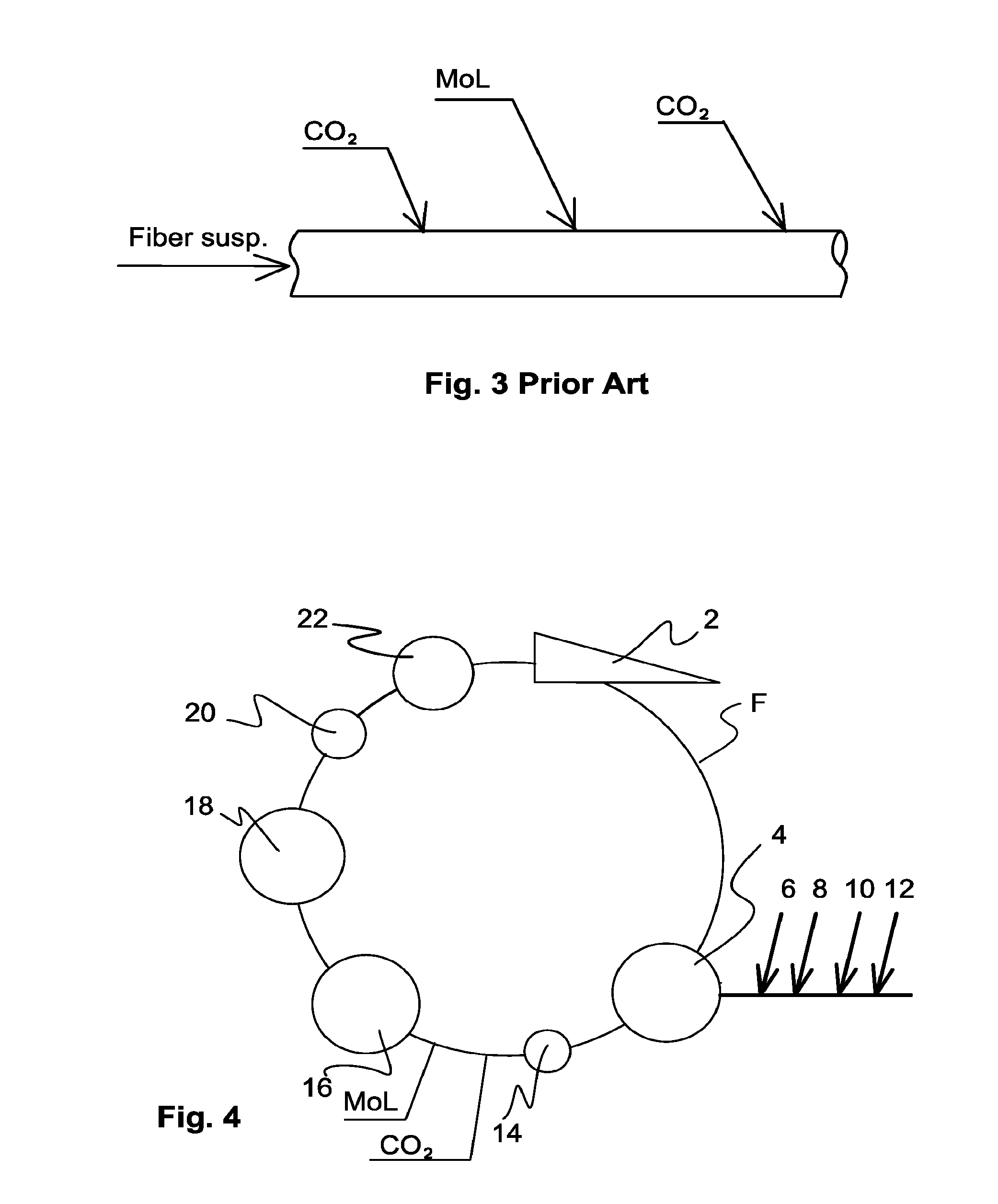Method for crystallizing a filler in connection with a fiber web process, and an approach system for a fiber web machine
a fiber web machine and filler technology, applied in the field of crystallizing fillers, can solve the problems of degrading the properties of pcc, requiring the use of dispersed agents and biocides, and reducing so as to achieve process control and adjustment, and the difficulty of predicting the quality of pcc produced
- Summary
- Abstract
- Description
- Claims
- Application Information
AI Technical Summary
Benefits of technology
Problems solved by technology
Method used
Image
Examples
Embodiment Construction
[0099]It should be noted that for the sake of simplicity the section related to the above invention and especially the following more detailed explanation of the invention use relatively general terms, whose explanations are provided below.[0100]A papermaking machine refers more broadly to a fiber web machine, or all web-production machines, in which a web-like product is produced from a fiber-containing suspension. This therefore includes besides various end products, also all possible intermediate products.[0101]Stock refers to any suspension flowing toward the headbox of a fiber web machine, the web being formed from this suspension at some point by a fiber web machine. Stock comprises all the above-mentioned suspension types containing fiber even to a minor extent.[0102]A liquid flow refers to all flows, regardless of consistency, moving in a short circulation of the fiber web machine, thus the liquid flow may contain more or less fiber and / or various paper production additives ...
PUM
| Property | Measurement | Unit |
|---|---|---|
| flow time | aaaaa | aaaaa |
| flow time | aaaaa | aaaaa |
| temperature | aaaaa | aaaaa |
Abstract
Description
Claims
Application Information
 Login to View More
Login to View More - R&D
- Intellectual Property
- Life Sciences
- Materials
- Tech Scout
- Unparalleled Data Quality
- Higher Quality Content
- 60% Fewer Hallucinations
Browse by: Latest US Patents, China's latest patents, Technical Efficacy Thesaurus, Application Domain, Technology Topic, Popular Technical Reports.
© 2025 PatSnap. All rights reserved.Legal|Privacy policy|Modern Slavery Act Transparency Statement|Sitemap|About US| Contact US: help@patsnap.com



